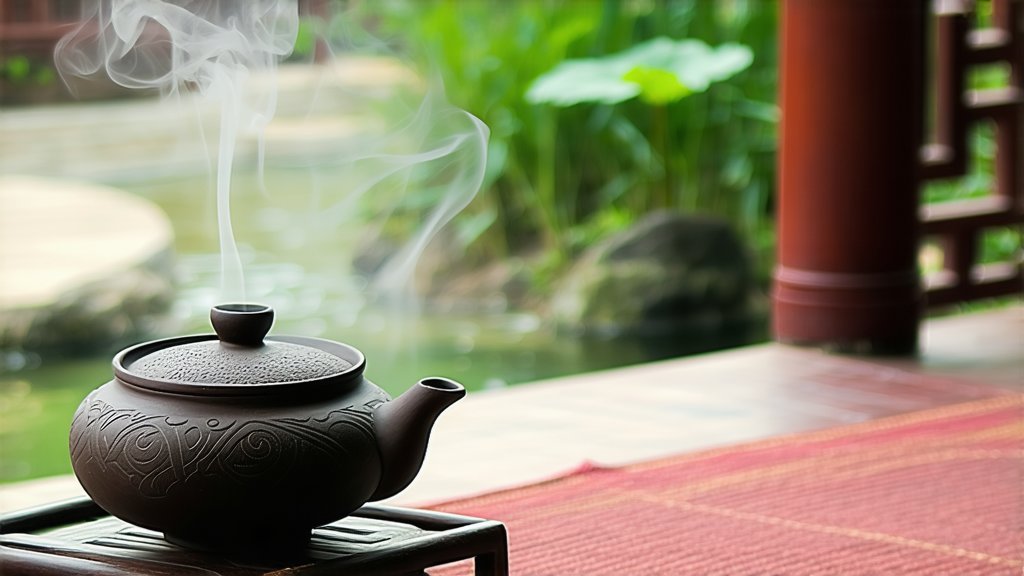
Anhua Dark Tea, also known as "Hei Cha" or Black Tea, is one of the most distinctive and revered categories within the vast spectrum of Chinese teas. Among its various subtypes, each with unique characteristics and production methods, Pu-erh tea stands out for its complex aging process and profound health benefits. This article delves into the history, varieties, production techniques, and appreciation methods of Anhua Dark Tea, aiming to provide international readers with an in-depth understanding of this timeless beverage.
Historical Background
The origins of Anhua Dark Tea date back over a thousand years, with its roots embedded deeply in the rich cultural soil of China's Hunan province. Initially, it was created as a practical solution to transport tea over long distances. By compressing the leaves into dense cakes or bricks, merchants could more easily carry and trade these precious commodities along the ancient Silk Road. Over centuries, what began as a pragmatic innovation evolved into a refined art form, cherished by tea connoisseurs for its unique flavor profile and numerous health benefits.
Varieties of Anhua Dark Tea
Anhua Dark Tea encompasses several distinct varieties, each with its own unique attributes and production methods. Among them, the most renowned is Pu-erh tea, which further divides into two main categories: raw (Sheng) Pu-erh and ripe (Shou) Pu-erh.
Raw (Sheng) Pu-erh: This variety undergoes minimal processing after the initial drying of the plucked leaves. It retains much of its natural character, allowing for complex flavors to develop over time through natural aging processes. Raw Pu-erh is prized for its evolving taste, which can change dramatically over decades, offering notes ranging from fresh and vegetal to earthy and woody.
Ripe (Shou) Pu-erh: In contrast to raw Pu-erh, ripe Pu-erh undergoes a post-fermentation process that accelerates the aging process. This involves a controlled microbial fermentation that mellows the tea, resulting in a smoother, earthier flavor profile even in its younger stages. Ripe Pu-erh is often enjoyed sooner than its raw counterpart due to its more approachable taste immediately after production.
Production Techniques
The craftsmanship involved in creating Anhua Dark Tea is both an art and a science, requiring careful attention to detail at every stage of production. Here’s an overview of the key steps involved:
-
Leaf Plucking: High-quality tea leaves are hand-picked, typically from old-growth tea trees, ensuring only the finest buds and leaves are selected.
-
Withering: The freshly picked leaves are spread out to wilt under the sun or in shade, reducing moisture content and preparing the leaves for subsequent steps.
-
Fixation: Also known as killing green, this step involves briefly heating the leaves to halt enzymatic activity, preserving their green color and fresh aroma.
-
Rolling: The fixed leaves are rolled to break down cell walls, releasing juices that will facilitate fermentation.
-
Fermentation: For raw Pu-erh, the rolled leaves are left to dry and age naturally over time. For ripe Pu-erh, a post-fermentation process called "wet piling" or "wo dui" is employed. This involves piling the leaves into large mounds where they undergo controlled microbial fermentation, monitored closely for optimal conditions.
-
Drying: After fermentation, the tea is dried to reduce moisture content, making it suitable for long-term storage and aging.
-
Aging: Both raw and ripe Pu-erh benefit from proper aging, which enhances their flavor complexity and depth. Aging can take place in specialized warehouses designed to maintain consistent temperature and humidity levels conducive to gradual transformation.
Appreciation Methods
To fully appreciate the nuances of Anhua Dark Tea, particularly Pu-erh, it is essential to adopt a mindful approach to brewing and tasting. Here are some guidelines for an enriching experience:
-
Gongfu Brewing: This traditional Chinese method emphasizes precision and control, using small teapots and cups to extract the maximum flavor from the leaves. Start with a brief rinse to awaken the tea, followed by short steepings that gradually increase in length. Pay attention to the changing colors and aromas in each infusion.
-
Observation: Examine the dry leaves before brewing, noting their shape, size, and color. Observe how they unfurl during steeping, revealing their full character.
-
Aroma: Take time to inhale the fragrance of the brewed tea, identifying subtle notes that may include earthiness, wood, mushrooms, or fruit depending on the variety and age of the tea.
-
Tasting: Sip slowly, allowing the tea to coat your palate fully. Notice the initial impression, mid-mouth feel, and aftertaste. Look for complexity, balance, and lingering effects.
-
Multiple Infusions: Anhua Dark Tea, especially Pu-erh, rewards multiple infusions, each revealing different facets of its flavor profile. Enjoy the journey as the tea evolves with each brew.
Health Benefits
Beyond its captivating taste and aroma, Anhua Dark Tea offers a myriad of health benefits that have been celebrated in traditional Chinese medicine for centuries. Some of these benefits include:
- Digestive Aid: The microbial fermentation process produces beneficial enzymes that aid digestion and promote gut health.
- Cholesterol Reduction: Studies suggest that regular consumption of Anhua Dark Tea can help lower bad cholesterol levels (LDL) while increasing good cholesterol (HDL).
- Antioxidant Properties: Rich in polyphenols and other antioxidants, Anhua Dark Tea helps combat oxidative stress, potentially reducing the risk of chronic diseases such as cancer and heart disease.
- Weight Management: Some research indicates that Anhua Dark Tea may boost metabolism and assist in weight loss efforts when combined with a healthy diet and exercise.
- Immune Support: The tea's bioactive compounds can strengthen the immune system, enhancing the body's ability to fend off illnesses.
Conclusion
Anhua Dark Tea, particularly Pu-erh, represents a fascinating intersection of tradition, science, and art. Its deep historical roots, diverse varieties, intricate production methods, and multifaceted health benefits make it a truly exceptional tea worth exploring. Whether you are a seasoned tea enthusiast or a curious newcomer, this dark treasure from China offers a rewarding journey for the senses and a boon for well-being. Embrace the timeless allure of Anhua Dark Tea and discover a world of flavors waiting to be savored.